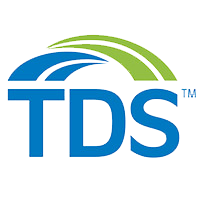Have you been a victim of "slamming" or "cramming"?
Consumer confusion over telephone bills has significantly contributed to the growth of slamming, cramming and other types of telecommunications fraud. TDS Telecom wants to prevent its customers from being scammed, and help combat slamming and cramming if it has occurred.
Slamming is a term used to describe any practice that changes a telephone customer's authorized long distance telephone company to another company without the subscriber's knowledge or consent.
What are your rights if you have been slammed?
If you have paid your phone bill and then discover you have been slammed:
How can you avoid being slammed?
What can You do if you've been slammed?
What are some signs of cramming to look for?
How does cramming occur?
How can you prevent cramming?
What can you do if you've been crammed?
What are your rights if you have been slammed?
- You do not have to pay anyone for service for up to 30 days after being slammed. This means you do not have to pay either your authorized telephone company (the company you actually chose to provide service) or the slamming company.
- You must pay any charges for service beyond 30 days to your authorized company, but at that company's rates, not the slammer's rates.
- If upon investigation the reported unauthorized company changes are found valid, you may be liable for unpaid charges and will be re-billed for unpaid charges.
If you have paid your phone bill and then discover you have been slammed:
- Once a state commission or the FCC has made a finding that a slam has occurred, the slamming company must pay your authorized company 150% of the charges it received from you. Upon receipt of the money, your authorized company will then reimburse you 50% of the charges you paid to the slammer. For example, if you were charged $100 by the slamming company, that company will have to give your authorized company $150, and you will receive $50 as a reimbursement.
How can you avoid being slammed?
- Be a smart consumer. Always examine your phone bill immediately and thoroughly. On your TDS Telecom bill, you will notice that any new service providers will be listed in bold, italicized type that reads "New service provider this billing period." This message will appear in the beginning of the "Summary of Long Distance Charges" section. Charges for new services that did not appear on a customer's last bill will be noted in the local service summary section also.
- Be aware of the ways in which companies are legally permitted to change your telephone service. The FCC requires that companies obtain your clear permission before such a change. Often this is done in the form of a signature and date.
- Place a PIC freeze on your account. This prevents a customer's preferred long distance company selection from being changed without his or her written or verbal consent. Contact your local TDS Telecom office for more information on how to place a PIC freeze on your account.
What can you do if you've been slammed?
- Call the slamming company, and tell them that you want the problem fixed. If you have not paid, tell them that you will not pay for the first 30 days of service.
- Call TDS Telecom and your authorized long distance company to inform them of the slam. Tell them that you want to be reinstated to the same calling plan you had before the slam. Tell them that you want all "change of carrier charges" (charges for switching companies) removed from your bill. The number to call is listed on the back of the first page of your telephone bill.
- Depending on where you live, you may be able to file a complaint with your state regulatory commission, which might be called the "Public Utilities Commission," or something similar. (link to list of states with local PUC)
- You can also choose to file a complaint with the FCC. To file a written complaint, send a typed or legibly printed letter in your own words to:
FCC
Common Carrier Bureau
Consumer Complaints
Mail Stop Code 1600A2
Washington, D.C. 20554
In your letter include the following:
- Your name, company name (where appropriate), address and a daytime telephone number (including area code)
- A brief description of the complaint
- The telephone number(s) involved with the complaint
- The date)s) of the incidents involved with the complaint
- The names, addresses and telephone numbers for the companies involved with your complaint
- The names and telephone numbers of the company employees you spoke with in an effort to resolve the complaint
- The dates you spoke with them; and the action you are requesting, such as a credit or refund for disputed charges
- Copies of the telephone bill(s) listing the disputed charges and other documents involved with the complaint. The disputed charges should be circled on the copies of the telephone bill(s)
- Click here to file a complaint online.
- To file a complaint over the phone, call the FCC's toll-free number at 1-888-CALL FCC.
Cramming is a term often used to describe the practice of placing unauthorized, misleading, or deceptive charges on consumers' telephone bills.
What are some signs of cramming to look for?
- $5-10 charges that appear on your bill without any explanation of the charge, such as "monthly fee" or "minimum monthly usage fee."
- Charges appear legitimate by billing under a fictitious company name.
- Services you didn't order, such as voice mail, Internet, etc., appear on your bill.
- Collect call charges billed at a high rate appear on the bill, although you never accepted the charge.
- Sweepstakes or contest forms include small print that informs you the form also acts as an authorization to switch or add to your service.
- TDS Telecom often bills its customers for services provided by other companies. Cramming charges can be included with a customer's TDS Telecom bill when a long distance company or another type of service provider sends inaccurate billing data, either through oversight or intentionally, to TDS Telecom. TDS Telecom then bills the consumer for the calls or services.
- Cramming can also occur when a local or long distance telephone company or another type of service provider imposes a charge for services authorized by a consumer but does not clearly or accurately describe all of the applicable charges to the consumer when marketing the service.
- Do not sign anything without first reading it carefully. If you don't understand what is written, ask questions.
- Read your monthly phone bill thoroughly. If you don't understand the charges, call the telephone number listed at the top of the bill page.
- Insist that any products and services not ordered are removed from your bill.
- Remember that you may sometimes be billed for a call you placed or a service you used, but the description listed on your bill for the call or service may be unclear. Ask the company that billed the charge to explain the service provided before paying the bill.
- Keep a record of the telephone services you have authorized and used, including calls placed to 900 numbers and other types of telephone information services. These records can be helpful when billing descriptions are unclear.
- Report cramming incidents to the FCC.
What can you do if you've been crammed?
- Immediately call the company that charged you for calls you did not place or for services you did not authorize or use. Ask the company to explain the charges. Request an adjustment to your bill for incorrect charges.
- Call TDS Telecom about cramming charges billed by that company. The number to call is listed on the back of the first page of your telephone bill.
- Explain your concerns about the cramming charges to TDS Telecom and ask them to explain the procedures for removing incorrect charges from your bill.
- If the companies you contacted will not remove incorrect charges from your bill, you can file a complaint with the proper regulatory agency.
- Depending on where you live, you may be able to file a complaint with your state regulatory commission, which might be called the "Public Utilities Commission," or something similar. (link to list of states with local PUC)
- You can also choose to file a complaint with the FCC. To file a written complaint, send a typed or legibly printed letter in your own words to:
FCC
Common Carrier Bureau
Consumer Complaints
Mail Stop Code 1600A2
Washington, D.C. 20554
In your letter include the following
- Your name, company name (where appropriate), address and a daytime telephone number (including area code)
- A brief description of the complaint
- The telephone number(s) involved with the complaint
- The date)s) of the incidents involved with the complaint
- The names, addresses and telephone numbers for the companies involved with your complaint
- The names and telephone numbers of the company employees you spoke with in an effort to resolve the complaint
- The dates you spoke with them; and the action you are requesting, such as a credit or refund for disputed charges
- Copies of the telephone bill(s) listing the disputed charges and other documents involved with the complaint. The disputed charges should be circled on the copies of the telephone bill(s)
- Click here to file a complaint online.
- To file a complaint over the phone, call the FCC's toll-free number at 1-888-CALL FCC.


